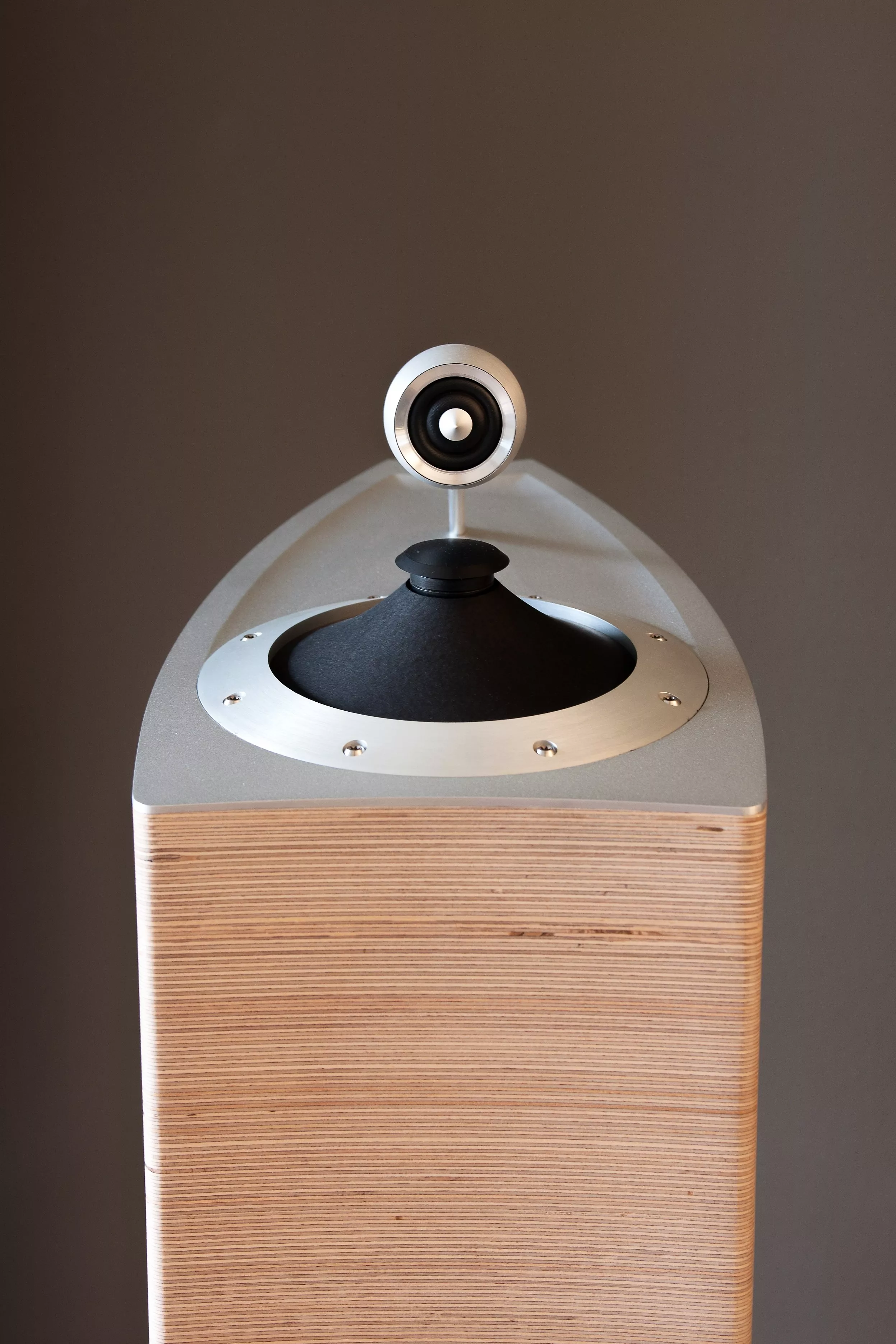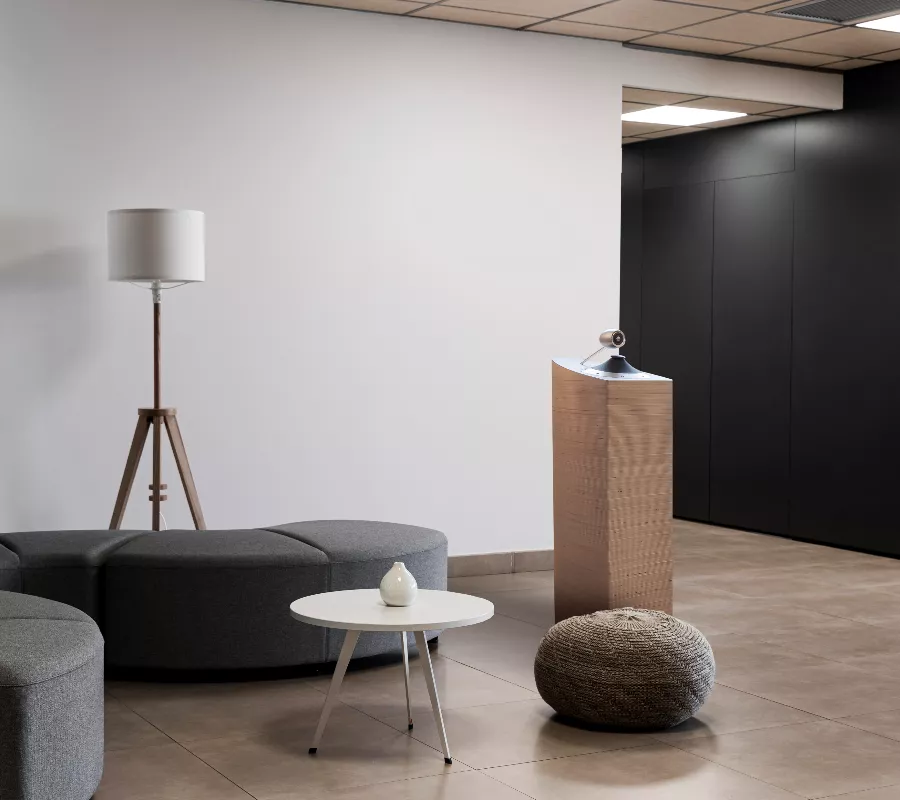ABOUT US
Who we are
We are a Belgian company that started “Project Ilumnia” in 2010. Our team; Jef Nuyts, Tom Nuyts, Lukas van der Sterren, Frank Essink and Felix de Schwartz. We are all music lovers who strive for the most natural and free reproduction of music. The name Ilumnia comes from the Latin "Iluminare", to shine light on or illuminate. This is exactly what our speakers do: they shed a new light on music in a way that has never been done before. With more detail, transparency and ease, resulting in the most natural and free sound you may have ever experienced.
Born from the pure hobby of Jef and Tom Nuyts, we decided in 2017 to commercialize our new technology. Nowadays everything is designed to be cost efficient, but our Ilumnia Magister never had that primary goal. It has been designed with a lot of patience and perseverance and is manufactured with great precision and craftsmanship.
The secret of our loudspeaker lies in our unique and self-designed driver with a cone that floats in its own electro-magnetic suspension. This makes us the first and only one in the world with this groundbreaking technology!
We hope you enjoy the Ilumnia sound as much as we do.
Not everything that can be counted counts.
Not everything that counts can be counted.
WILLIAM BRUCE CAMERON
VISION
Our vision about sound
Realistic, free and natural sound sounds like the marketing terms every audio company uses, but at Ilumnia we strive for these qualities in all our fibers and in every detail. It determines the difference between a very good speaker and a great speaker, and this can only be measured up to a point.
Psycho-acoustic research has shown that our brain can correct for a great deal of distortion (caused by acoustics, resonances, reflections, etc.). Otherwise we would never be able to hear as well as we do. In a mixture of sound, we can still place, isolate and recognize sounds well. It is not our ear, but our brain that helps us here. But the result of this constant correction by the brain is that it eventually gets tired of constantly having to correct what is essentially non-linear distortion. This is what we call listening fatigue and this is not a high end audio buzzword… It is crucial when designing a great speaker rather than a very good speaker. You only hear the difference between the two after some time – when the brain gets tired of correcting non-linear distortion.
It also has little to do with “tonal balance”. Tonal balance is important in reproducing correct timbres, but has little to do with reproducing natural sound. Tonal balance is often referred to as a certain linear distortion that is not tiring to the brain and is even pleasurable due to added warmth.
Let's start by saying that our speakers are completely neutral in terms of tonal balance. We do not add any warmth or unnatural details by adding high frequencies.
We believe that the other forms of non-linear distortion, such as resonances and non-linear behavior of the driver, are much more decisive for the quality of the reproduction.
We also think that the importance of room acoustics is often a bit exaggerated. Of course, these influence the frequency response, but they have a minor influence on the phenomenon of non-linear distortion.
So what is the main source of non-linear distortion (and therefore unnatural reproduction and listening fatigue)?
When we started the project in 2010 (purely as a hobby to make a great loudspeaker) it became clear that none of the current loudspeaker technologies could improve the intrinsic sound quality of all existing concepts. Everything had already been tried thousands of times within the existing frameworks. Even the best cabinet, the most advanced and most expensive filters and the most exotic shapes and materials could not eliminate the phenomenon of non-linear distortion. In our view, it was time for a completely new paradigm.
The idea was actually quite simple: just take away all the fundamental, real causes of distortion instead of trying to minimize or mask them. A simple idea, but difficult to realize, as we also found out. In the end, it took us 7 years to realize our groundbreaking LEMS driver, completely removing the source of all distortion – the suspension of the cone to bead and voice coil. We think the result is amazing and sound reproduction has reached a new and high level that was previously unknown.
INTERVIEW
With Tom and Jef Nuyts
KEY OBJECTIVES
Main design principles
- Maximum speed for optimal micro & macro dynamics
- Minimum distortion for natural sound reproduction
- Maximum linearity for having no compression
Our goal was to transmit 100% energy of the amplifiers signal solely into the cone itself and nothing else but the cone. So that even the smallest signal is translated into movement of the cone (and thus micro detail) and with a fast transient response to large signals (and thus macro dynamics).
The result of our technology is ultimate transmission and preservation of the amplifier’s signal (energy) into the driver cone.


OUR PROCESS
Did you know
Although the development of this speaker reads like a very technical story (which in fact it also is) we would like to emphasize that the technique was just part of the complete process.
It took us years to complete the whole project and we can say that a lot of time in between new developments or prototypes went into listening in order to improve the technique. Not the way around. Even comparisons with real life instruments were often on the menu.
So beside the extensive list of technical features and design choices the most important ingredients were “musicality” and “soul”.